When engine specifications are changed, or even when intake and exhaust system parts are replaced, it may be necessary to change the carb setup. It is easy to assume that it is because the power has been increased, such as when the jet size has to be increased to stay in tune but is this really the case? Using the example of a Kawasaki Estrella customized with a bobber custom, we will consider the relationship between the air cleaner case and the carb setting.
- What is the effect of removing the air cleaner case on the carburetor setup?
- POINT
- Making jets bigger isn’t necessarily because of increased engine power.
- POINT
- Changes in the intake system have a significant impact on the slow system.
- POINT
What is the effect of removing the air cleaner case on the carburetor setup?
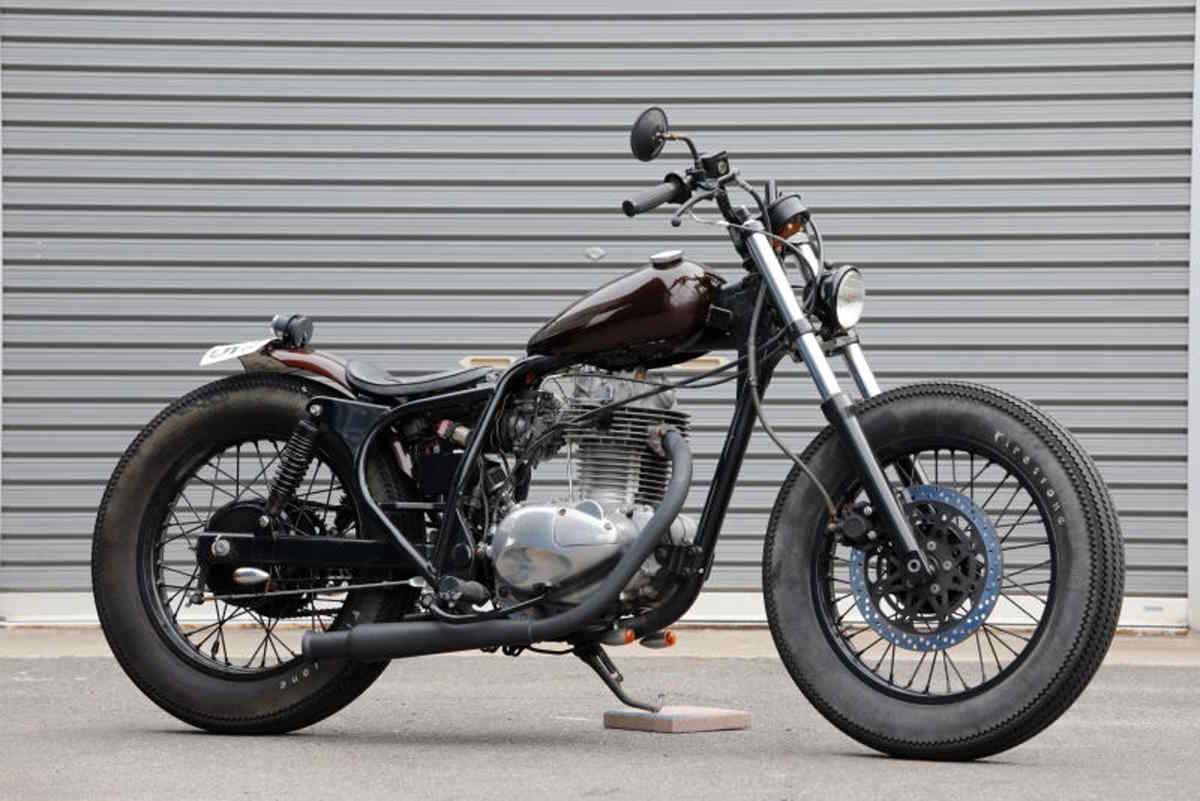

The Kawasaki Estrella has been completely redesigned from the exterior to the suspension and has no trace of its OEM appearance. It is a long seller that was released from 1992 to 2017. Since the intake system is fuel injection from 2007 onward, we recommend the version from 2006 or earlier if you want to customize the simple look.
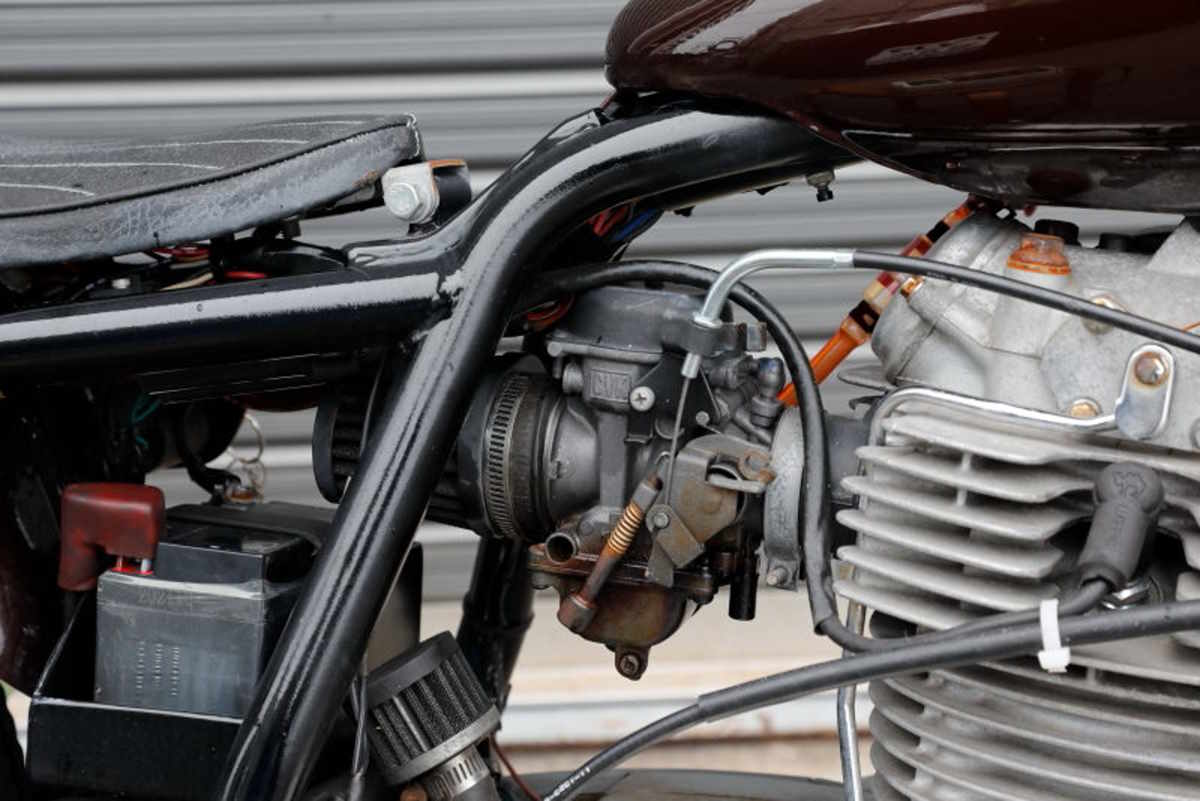

The intake system with a power filter in place of the removed air cleaner case. The OEM case is a mismatch for the bobber style, but it cannot run properly with it removed.
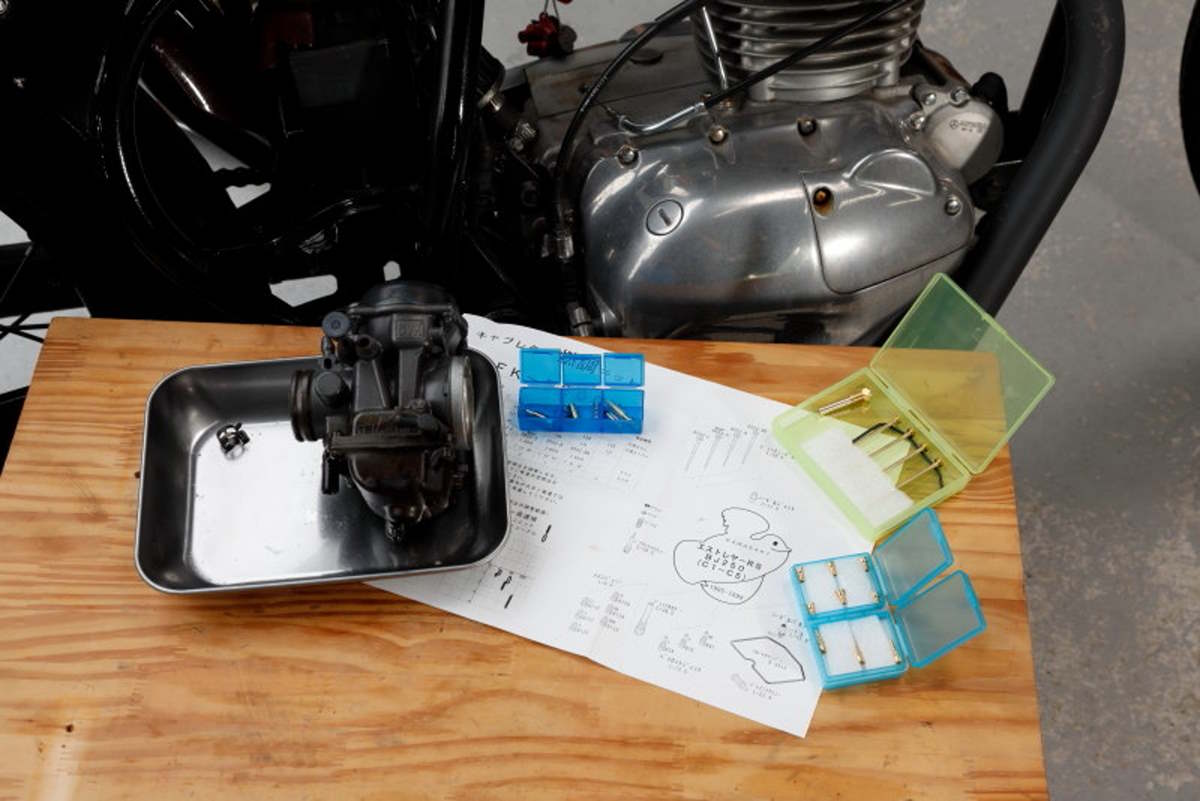

When the pilot screw return rpm is set to the standard value, the mixture is noticeably thin at the beginning of the throttle opening, so the setting should be changed. It is not easy to find a different-size jet or needle for the OEM carburetor, but with the Key Star fuel adjustment kit, the setting can be changed at will.
The most popular customization of cars with carburetors is the installation of special carburetors such as Keihin FCR or Mikuni TMR, or the removal of the air cleaner case when using the OEM carburetor. In the customization called “Skatune” a long time ago and “Bobber style” now, removing the stock air cleaner case is a standard menu item in order to make the under-seat area look more neat and clean.
The Kawasaki Estrella shown here is another vehicle that was modified to a bobber style, with the air cleaner case removed and a power filter installed, leaving the stock CVK carburetor in place. This made it look a lot cooler, but at the same time revealed a negative aspect: it was difficult to handle at low throttle openings. Starting with the choke and idling was not a problem, but when it came time to start the car, the engine lacked power, and even when it somehow managed to accelerate, the muffler would emit a pang of after-fire when the throttle was pulled back. As a symptomatic remedy, I backed off the pilot screw by 3 to 4 turns, which makes it somewhat better while driving, but now I have to tighten the screw to deal with the turnip symptom while idling. By the way, the standard return speed is 2 1/4 turns.
Perhaps because of such riding, fuel burning is evident near the pilot screw, as if fuel is seeping through the screw, and damage to the O-ring that should be in the screw is also assumed. This O-ring prevents secondary air intake from the screw threads to the pilot outlet, and the screw is not supposed to be turned frequently. If the pilot screw is turned back at a higher RPM, the mixture will become thicker from idle to low throttle position. If the engine is not running well unless you return more than the standard RPM, then you are probably running low on fuel due to the removal of the air cleaner case. I would like to think that the removal of the box, which was too tight for the intake, allowed more air to enter the engine, thus causing the fuel shortage, but is that really the case?
POINT
Point 1 – If you remove the OEM air cleaner case for customization of your motorcycle, the carburetor setup will change.
Point 2 – Lack of power or after-fire is a sign that the mixture ratio setting is too low.
Making jets bigger isn’t necessarily because of increased engine power.
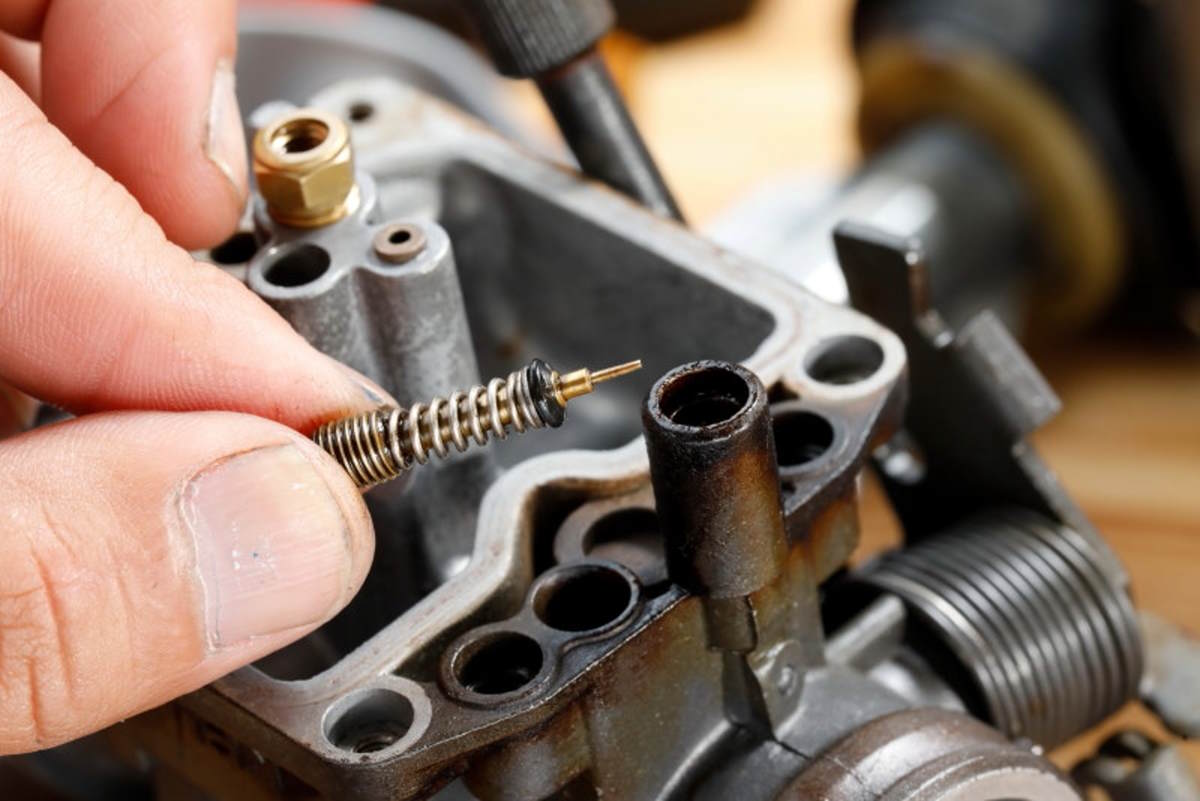

The owner was riding with the pilot screw set back far beyond the specified value in order to thicken the mixture ratio at low openings as much as possible. The O-ring at the tip of the screw was not working properly, and there was significant fuel contamination around the screw.
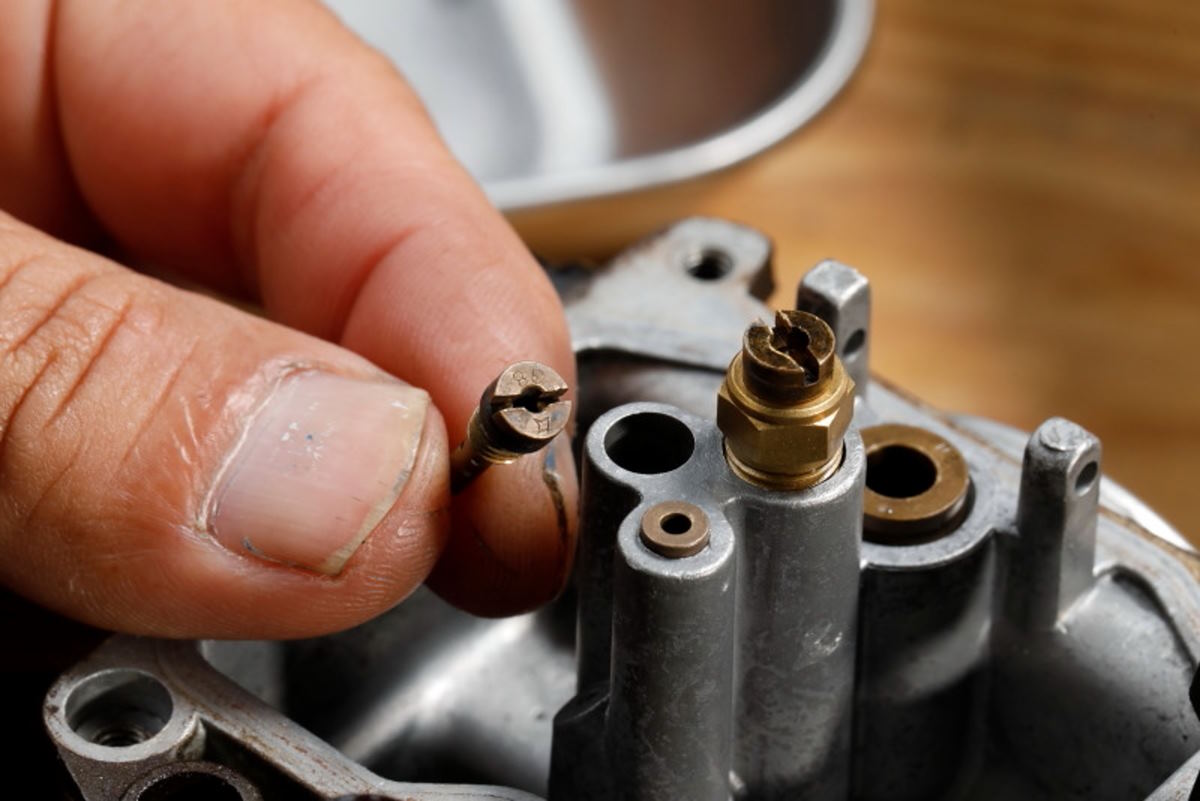

The OEM size of the slow jet is #35, but #38 is included, and I could sense the intent to make it thicker. But this is still too thin. I don’t know if they couldn’t find a larger size or if they gave up on the setting here.
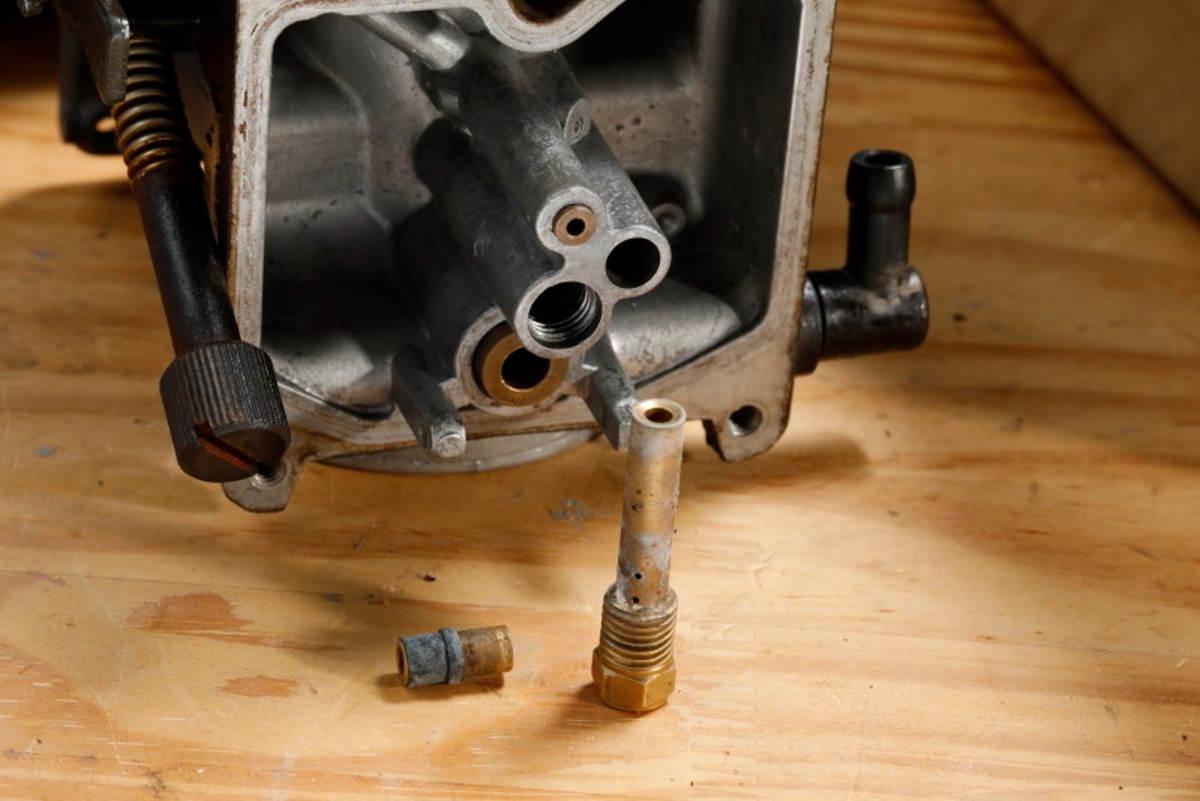

The main jet holder (right) and needle jet (left) removed from the body are dirty as if they had been corroded in the past. If the needle jet rubs against the jet needle and wears out, more fuel is sucked out, resulting in a thicker mixture, so check the condition of the holes.
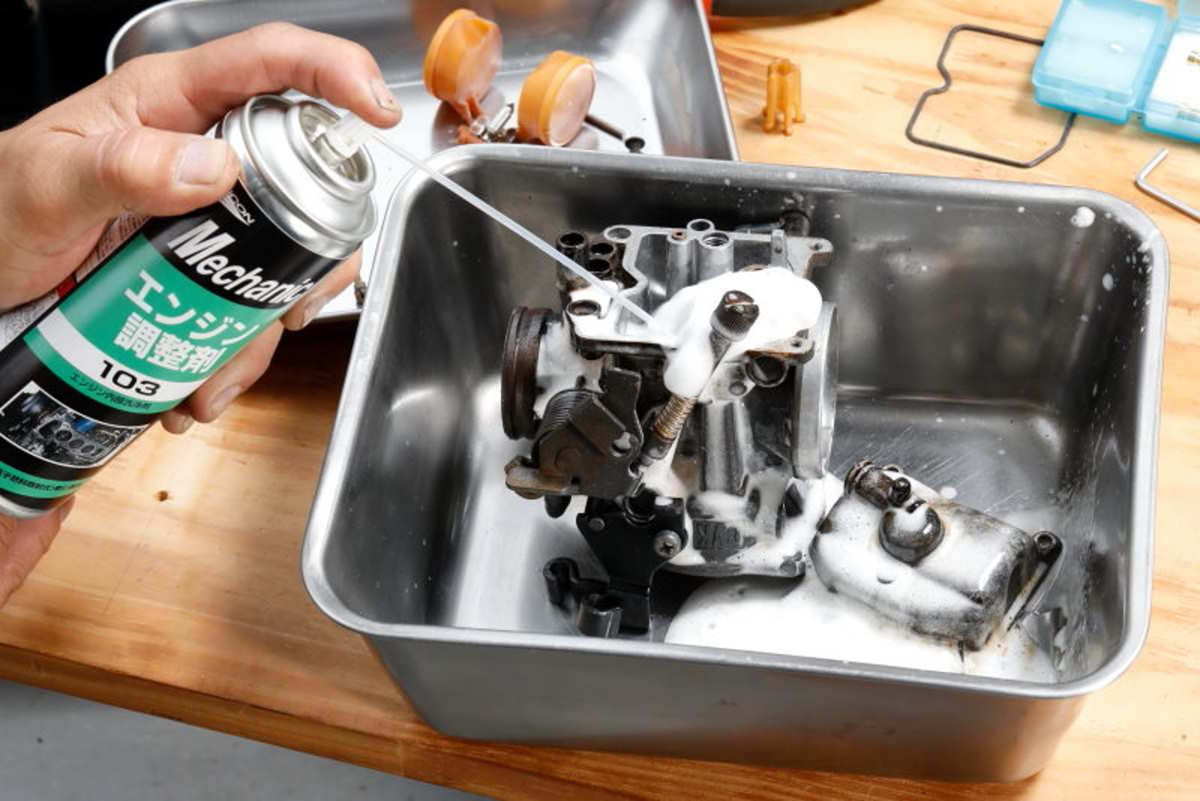

Although not directly related to the setting, the exterior of the carburetor, which is dirty with fuel, should also be cleaned with a foam-type carburetor cleaner. After use, rinse thoroughly with parts cleaner.
If the problem is a thin air mixture unless the pilot screw is increased in RPM, then the solution would be to increase the size of the slow jet. It is tempting to think that a larger jet means more fuel and more power, and therefore to conclude that air cleaner case removal is an effective way to customize the intake system. In reality, however, this is not the case. The removal of the air cleaner case lowered the intake negative pressure on the carburetor, which greatly reduced the amount of fuel drawn from the slow jets, resulting in a thinner air mixture.
Observing the genuine air cleaner case, do you feel that the size of the intake port is small in relation to the overall size of the case? You may feel that the intake port is too small for the overall size of the case.
With this size, the negative pressure generated when the engine is started is added to the carburetor itself.
As the OEM Estrella CVK carburetor is called a negative pressure carburetor, it is set up considering the negative pressure inside the air cleaner case as well as the intake negative pressure generated by the engine. The principle of the negative pressure carburetor is that by restricting the amount of air that the engine tries to suck in at the intake of the air cleaner case, negative pressure is generated in the venturi of the carburetor, which sucks up fuel in the float chamber, and the vacuum piston is also activated. You can feel the increase in intake negative pressure as you gradually plug the other side with your finger while sucking air through the straw. If a small horizontal hole is made in the middle of the straw while the negative pressure in the straw is increasing, air will be sucked in through the hole.
However, when the blocked finger is released, the air will pass through the original hole in the straw, and the amount of air sucked in through the small horizontal hole will be greatly reduced.
The removal of the air cleaner case produces the same result as the straw experiment between the venturi and the needle jet. Simply put, air tries to enter from the easiest place to enter.
Since the pilot outlet, which supplies fuel at idle, is located on the engine side of the butterfly valve and works when the throttle is closed, even with the cleaner case removed, a large negative pressure is created and the air mixture is sucked out.
However, when the throttle is opened for driving, the engine side tries to suck in air vigorously, while the negative pressure on the intake side is drastically reduced because the cleaner case is removed and there is no resistance, and the negative pressure in the needle jet is also reduced. As a result, the fuel mixture becomes thinner. Increasing the size of the slow jet to compensate for the lack of power when the throttle is opened is not because the engine power has increased due to reduced intake resistance, but because it is necessary to improve the symptom of reduced negative pressure and the inability to suck up fuel.
POINT
Point 1 – The OEM carburetor is designed with the assumption that an air cleaner case will be installed, and if the cleaner case is removed and the intake negative pressure is reduced, fuel will have a hard time coming out of the jet needles.
Point 2 – Enlarge the size of the slow jet to compensate for the reduced intake negative pressure of the venturi and set up
Changes in the intake system have a significant impact on the slow system.
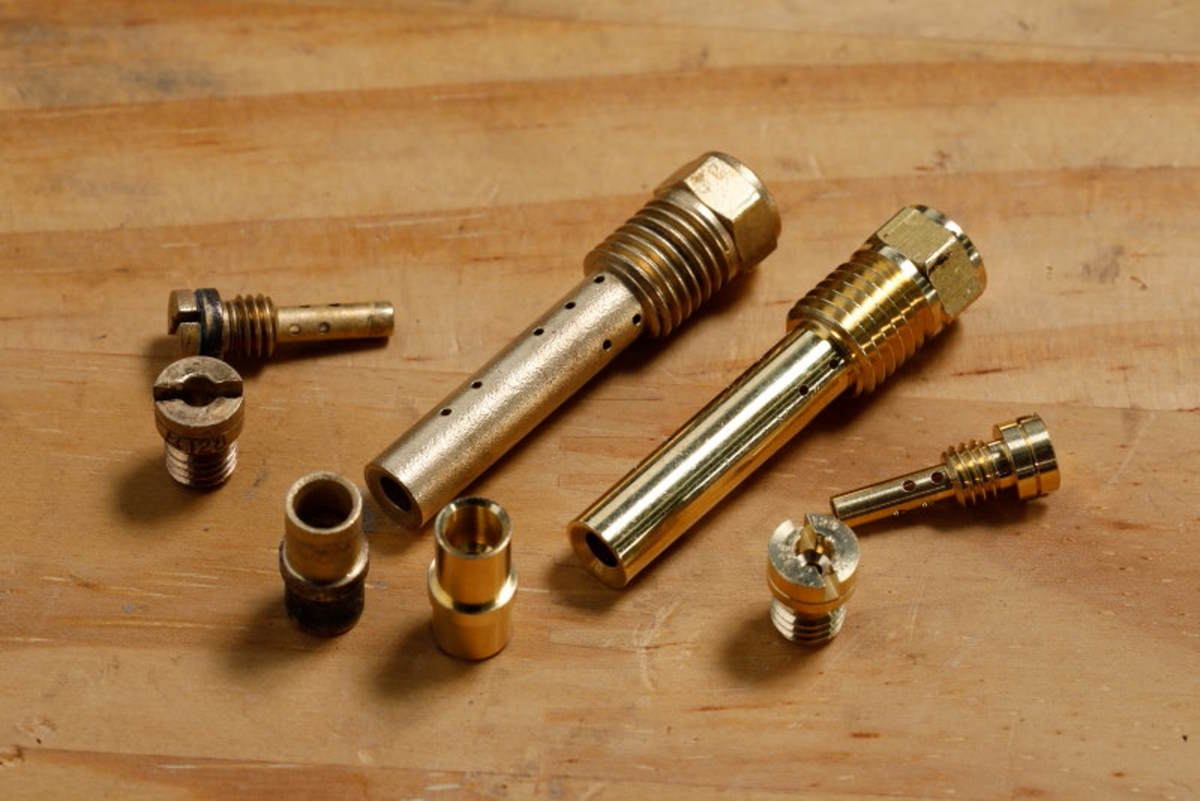

The newly installed parts are Keystar’s fuel adjustment kit. The main jet is #125, the same as the OEM one, and the throw size is increased to #41. I also used the jet needle of an OEM size.
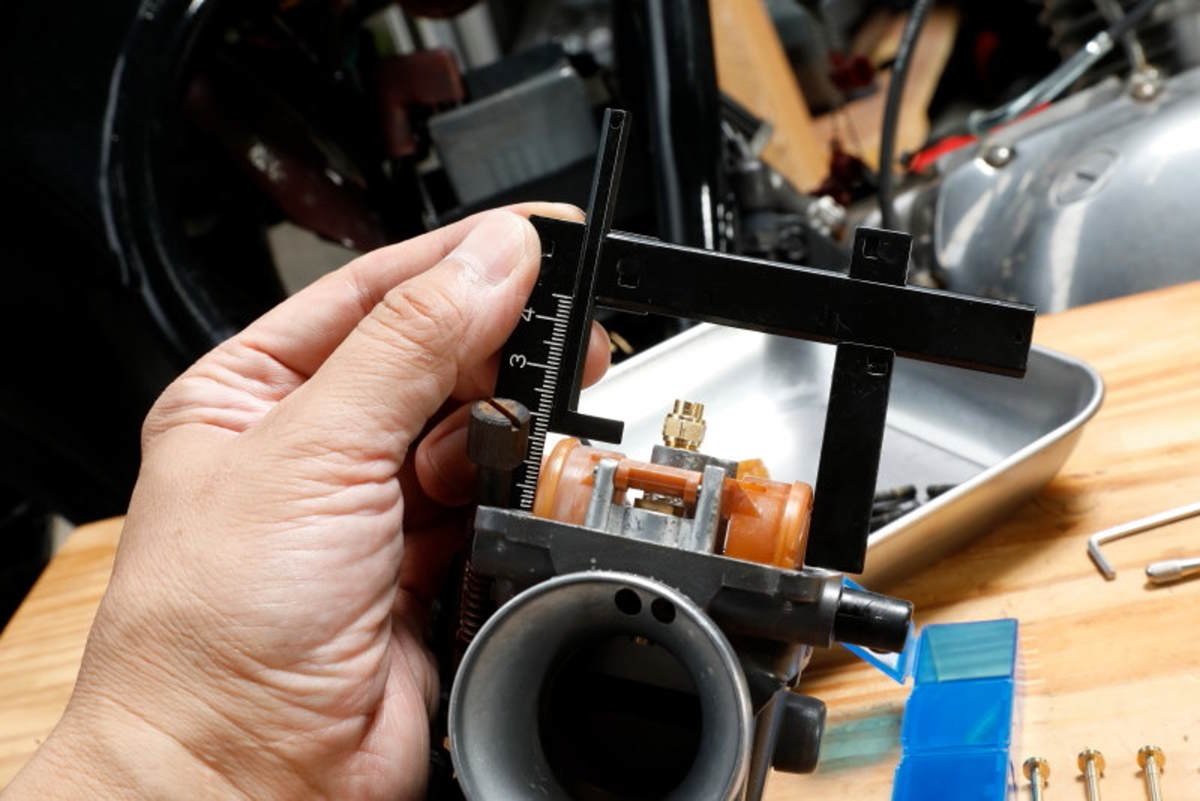

Float height should also be checked during assembly. If the oil level is higher than the specified value, the mixing ratio will be thicker, and if it is lower, it will be thinner. This is because when the intake negative pressure is the same, a higher oil level = closer to the bottom of the venturi, the mixture is more likely to be sucked out.
If the slow jet size is increased to compensate for the loss of fuel in the slow system due to the decrease in intake negative pressure, the jet needle, which determines the throttle mid-opening angle, and the main jet, which affects the full opening range, must also be set. However, as the throttle opening angle increases, the negative pressure generated in the venturi becomes smaller, even with the air cleaner case, and the air flow rate becomes more and more involved in the setting. The butterfly valve is the source of resistance for the venturi and the engine, and as the opening angle increases and the engine can suck in as much air as it wants, the fuel sucked out of the needle jet becomes dependent on the air flow rate because the resistance component is smaller.
Even though the air cleaner case creates intake resistance, motorcycle manufacturers develop their engines so that the amount of air required by the engine flows without excess or deficiency when the throttle is fully open. In other words, with or without the cleaner case, that engine and carburetor combination will not cause as much difference in the amount of air flowing at full throttle opening as in the low throttle opening range, where negative pressure has a greater effect. The OEM slow jet on the Kawasaki Estrella (1995 model) was #35 and the main jet was #122, and the current car had a #38 slow jet. I guess the purpose was to improve the thin mixture ratio, but in reality, it is still thin, so I will replace it with #41 from Keystar’s fuel adjustment kit.
The pilot screw return speed is now 2 1/4 rpm as specified, but there is a strong sense of power from the start of the throttle opening, and the connection from medium to high throttle opening has been greatly improved. Also, there is no after-fire when the throttle is suddenly closed, and the pilot screw return is in line with the specified value, so there is no more fogging symptom while idling. From the standpoint of the characteristics of the negative pressure carburetor, the change in negative pressure caused by the removal of the air cleaner case also affects the operation of the vacuum piston. However, this can also be due to the fact that the degree of involvement of the intake airflow from the intake negative pressure increases with changes in throttle opening, and in this instance, there was no discomfort when the engine speed rose or fell.
The basic principle of a carburetor is that the fuel in the float chamber is sucked up by the intake airflow according to the laws of nature. Not only flow rate but also negative pressure is involved in this process, especially at low throttle openings, which determines the carburetor setup. You may think that the stock air cleaner case and other components only serve as intake resistance, but be aware that manufacturers develop carburetors on this premise, so if the removal of the cleaner case disrupts the stock balance, a new setting will be required.
POINT
Point 1 – In the region of small throttle openings, the degree of involvement of the intake negative pressure is large, and as the opening increases, the dependence on the intake air volume increases
Point 2 – If the OEM air cleaner case is removed and the intake negative pressure becomes small, increase the size of the slow jet and check the situation.